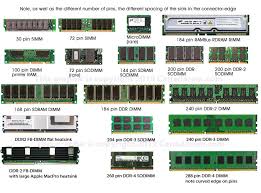
RAM / Memory Modules
🧠 RAM / Memory Modules Overview
What is RAM?
RAM (Random Access Memory) is a type of volatile memory that temporarily stores data that your computer needs to access quickly. It plays a critical role in overall system performance—more RAM generally allows smoother multitasking and faster application response.
🔍 Key Types of RAM
-
DDR (Double Data Rate)
-
DDR3 – Older standard, used in many systems from 2007–2017
-
DDR4 – Current mainstream type (used since ~2014)
-
DDR5 – Newest generation with higher speeds and efficiency
-
-
Form Factors
-
DIMM (Dual Inline Memory Module) – For desktops
-
SO-DIMM (Small Outline DIMM) – For laptops, mini-PCs, and all-in-ones
-
-
ECC vs Non-ECC
-
ECC (Error-Correcting Code) – Used in servers/workstations
-
Non-ECC – Standard consumer RAM
-
⚙️ Specifications to Consider
-
Capacity: 4GB, 8GB, 16GB, 32GB, 64GB, etc.
-
Speed: Measured in MHz (e.g., 2400MHz, 3200MHz, 4800MHz)
-
Latency: Lower CAS latency = better responsiveness
-
Voltage: Impacts power consumption and compatibility

